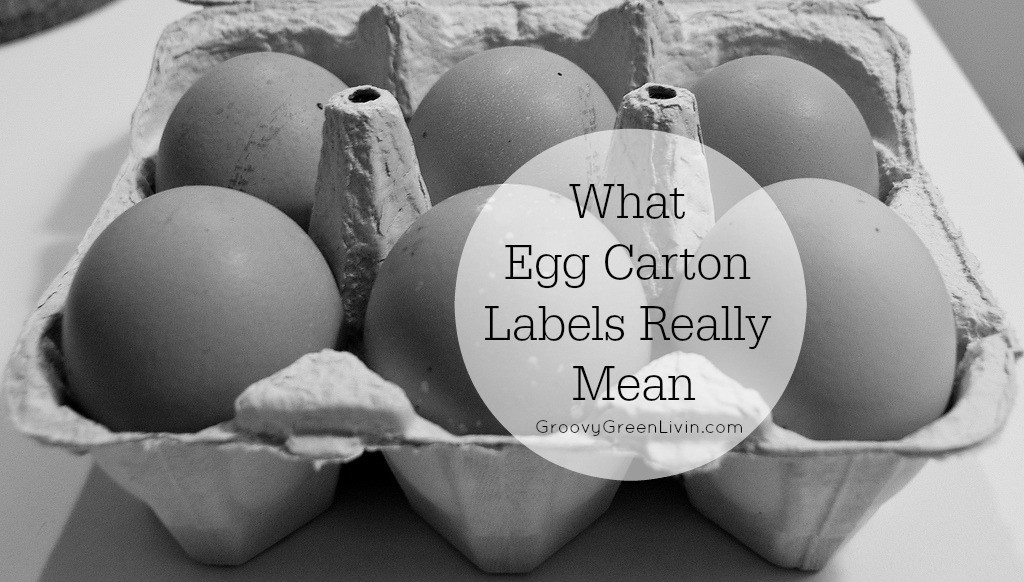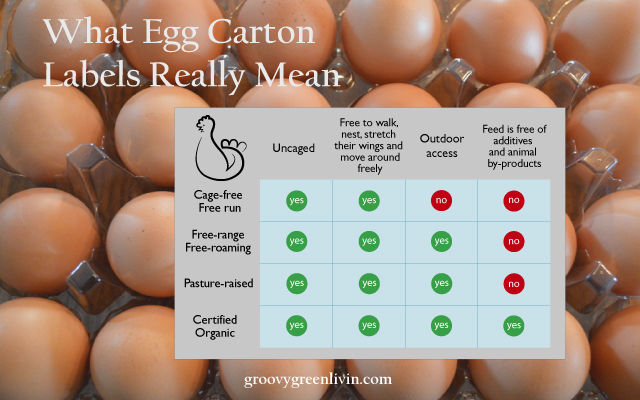Eggs are a staple in our home and as a result, we are constantly restocking our supply. Our family’s been part of a CSA [2] for many years and we receive an organic [3] egg share each week. The eggs are delicious and definitely taste different than their store bought version. The CSA delivers the eggs in plain egg cartons, devoid of any labels. Almost all egg cartons at the supermarket tell a different story.
On your next trip to the supermarket take a good look at the egg cartons. As a consumer, it’s become quite confusing to buy a simple carton of eggs since most are covered with confusing labels. It’s hard to understand what they all mean and whether or not there’s any truth behind the label. While some labels are truly a regulated certification, others are just words that don’t mean much of anything.
Before we jump into egg carton labeling [4] let’s be clear that white and brown eggs pack the same nutritional punch [5]. There’s virtually no difference. There’s a simple explanation: White-feathered chickens lay white eggs while brown feather chickens lay brown eggs.
The next time you’re at the market for eggs here’s a cheat sheet to help you decipher the confusing world of egg carton labels.
What egg carton labels really mean. Take this guide with you the market! [6]Click To Tweet [6]
Cage-free eggs (free run)
If you’re envisioning chickens roaming around freely in a cage-free environment this probably isn’t the case. Cage-free or free run chickens generally are uncaged and can stretch their wings and move about freely [7]. That’s it. This doesn’t mean they have any outdoor access and it also doesn’t mean that they have plenty of room to move about freely. It’s impossible to tell from the “cage-free” egg carton label whether the hens are packed together in a “cage-free” environment or have enough space to roam around.
Free-range (Free-roaming)
Unfortunately labeling eggs “free-range” doesn’t mean very much. Hens in a free-range environment are uncaged and can go outside if they want to. There’s no requirement that they spend a specific amount of time outside or that they go outside at all. If eggs are “Certified Humane, [8]” the hens must have access to at least two square feet of outdoor space [9] for up to six hours a day. California has state regulation [10] that says eggs sold in California must come from hens that have enough room [9] to lie, stand, turn around and spread their wings without touching another bird. Any eggs originating in California or being sold there must be in compliance.
Pasture-raised
This is a completely unregulated term but still widely used on eggs. It seems to mean the bird has more space to roam than a cage-free hen. According to one farm: [11] “Grass-fed/pastured hens are raised on pasture, as opposed to being kept in confinement and fed primarily grains.”
Certified Organic
An organic certification on your eggs actually means something (finally!). Eggs with a U.S. Department of Agriculture organic certification label come from uncaged hens that are free to roam in their houses and have access to the outdoors [12]. Due to the strict requirements, the hens are fed an organic feed produced without conventional pesticides or fertilizers and they’re never given antibiotics.
What type of eggs do you usually buy?
P.S. If you liked this post you might enjoy our FREE Groovy Green Livin Newsletter [13]. Receive new posts and special opportunities delivered right to your inbox! Sign up HERE [13].

